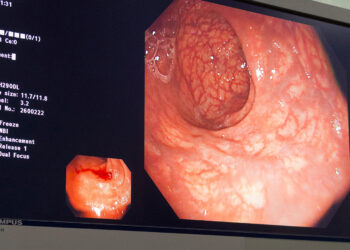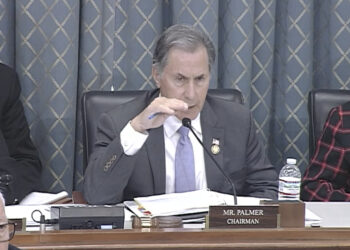In the largest study of its kind involving a diabetic population, the use of glucagon-like peptide 1 receptor agonist (GLP-1 RA) drugs shows no significantly increased risk for thyroid cancer, with the important caveat of the study’s relatively short follow-up period.
“In this large multisite study utilizing data from 6 population-based databases, we found no evidence that GLP-1 RA use is associated with an increased risk for thyroid cancer with follow-up ranging from 1.8 to 3.0 years, providing some reassurance to patients and clinicians about the short-term safety of these drugs,” report the authors in the study, published this month in Thyroid.
“While we cannot rule out [developments] 20 years from now, we can say that we do not see the same short-term association that others have reported,” senior author Anton Pottegard, PhD, of Clinical Pharmacology, Pharmacy and Environmental Medicine, Department of Public Health, University of Southern Denmark, Odense, told Medscape Medical News.
“This makes the results quite valuable, as they provide reassurance that the recent concern does not seem to be supported by data.”
Preclinical studies and some post hoc analyses of randomized trials have suggested a possible link between GLP-1 RAs and thyroid cancer, hence, in the United States, the drugs carry a boxed warning of the possible risk, and those with personal or family histories of medullary thyroid cancer or multiple endocrine neoplasia syndrome type 2 are therefore advised to avoid the drugs.
And while evidence on the issue has been inconsistent, with some observational studies showing no increased risk, one recent notable study of more than 2500 patients with thyroid cancer showed that those treated with GLP-1 RAs for 1-3 years within 6 years of the study had a significant increase in thyroid and medullary thyroid cancers (adjusted hazard ratios [HR], 1.58 and 1.78, respectively).
To further investigate the short-term association, Pottegard and colleagues evaluated databases in Canada, Denmark, Norway, South Korea, Sweden and Taiwan spanning 2007 and 2023.
Patients with type 2 diabetes who had initiated GLP-1 RAs were identified and compared with those initiating dipeptidyl peptidase 4 inhibitors (DPP-4is). DPP-4is were selected as the active comparator because the drugs are used at a similar stage of diabetes during the study period and were introduced at a similar time as GLP-1 RAs.
Overall, the study included 98,147 users of GLP-1 RAs and 2,488,303 users of DPP-4is. The smaller GLP-1 RA group size was due to excluding GLP-1 RA patients who had prior use of DPP-4i.
All patients were aged ≥ 40 years and had been treated with metformin the prior year.
With the median follow-up among users of GLP1-RAs ranging from 1.8 to 3.0 years and for the DPP-4i cohort ranging from 2.8 to 6.8 years, no significant difference in the risk for thyroid cancer was observed between the groups (HR, 0.81; CI 0.59-1.12), with results consistent across all 6 of the study sites.
The results were also consistent across varying subgroups, including by age, type of GLP-1 RA, and cumulative dose of GLP-1 RAs. Further analysis showed no increased risk for thyroid cancer based on time since initiation of GLP-1 RA drugs, with the cumulative rate ratio of 0.59 after 5 years and 1.00 after 10 years.
Of note, a decreased risk for thyroid cancer was observed among female (HR, 0.62) vs male GLP-1 RA users (HR, 1.32).
An analysis of medullary thyroid cancer was not possible due to the low number of those cancers, which are known to be rare in the general population.
Further analyses showed no difference in thyroid cancer risk among those treated with GLP-1 RAs compared with those receiving sodium-glucose cotransporter-2 inhibitors (HR, 1.08), however, the risk was higher compared with those treated with sulfonylurea drugs (HR, 1.80).
Pottegard noted that, while the inability to provide meaningful risk estimates for medullary thyroid cancer due to having too few events was frustrating, “on the other hand, this allows us to conclude that the increased risk is unlikely to be [substantial], and equally important, that the risk, if any, is quite small on an absolute scale.”
Commenting on the study in an editorial, Juan Brito, MD, of the Division of Endocrinology, Diabetes, Metabolism and Nutrition at the Mayo Clinic in Rochester, Minnesota, and colleagues noted that the study “stands out for its large scale and robust methodology.”
They underscore the limitation that the short median follow-up period of 1.8-3.0 years in the GLP-1 RA group “is insufficient to evaluate long-term risks, which is particularly relevant given the latency associated with thyroid cancer development after exposures such as radiation [of approximately] 2.5 years.”
Brito and colleagues speculate that the increased risk for thyroid cancer reported in some observational studies may be explained by unmeasured confounders, such as weight and body mass index, which are “factors associated with thyroid cancer that are notoriously challenging to capture accurately in large observational studies.”
Such confounders might also explain the increased thyroid cancer risk with GLP-1 RAs only when compared with sulfonylureas, “which might be less prescribed for obese patients due to concerns about weight gain,” they noted.
Ultimately, however, the findings “contribute to the growing body of evidence suggesting that the benefits of GLP-1 RA likely outweigh any potential thyroid-related risks, reinforcing confidence in the absence of a clinically significant short-term causal relationship between GLP-1 RA and thyroid cancer,” Brito and colleagues wrote.
The results “provide reassurance to clinicians and patients, especially those without risk factors for medullary thyroid cancer.”
Pottegard and the editorial authors had no disclosures to report.
Source link : https://www.medscape.com/viewarticle/glp-1s-show-no-increased-risk-thyroid-cancer-2025a100011a?src=rss
Author :
Publish date : 2025-01-16 07:06:50
Copyright for syndicated content belongs to the linked Source.














